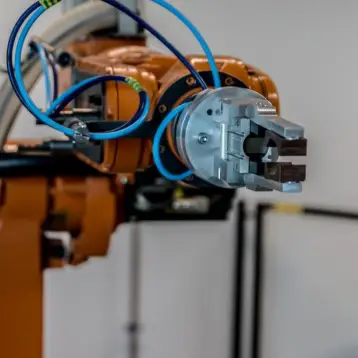Ayanna Howard, an Associate Professor in the School of Electrical and Computer Engineering at the Georgia Institute of Technology, is collaborating on this project with Derrick Lampkin, an Assistant Professor in the Department of Geography at Pennsylvania State University, and with Magnus Egerstedt, an Associate Professor in the School of Electrical and Computer Engineering. Funded by a grant from NASA’s Advanced Information Systems Technology (AIST) Program, their research will also be part of an exhibit at the Chicago Museum of Science and Industry in June.
“In order to say with certainty how climate change affects the world’s ice, scientists need accurate data points to validate their climate models,” Prof. Howard explains. “Our goal was to create rovers that could gather more accurate data to help scientists create better climate models. It’s definitely science-driven robotics.”
The SnoMotes can navigate autonomously via cameras and sensors. Scientists will decide on a location they wish to explore, will then program the SnoMotes with the assigned coverage area and requested measurements, and finally, will release them from a camp placed at a safe distance.
The robots will then place themselves at strategic locations by using one of two positioning methods: by “bidding” (as in an auction) on a desirable location based on their proximity to it and how well they are equipped for the job, or by applying more of a mathematical method, according to which the robots will be fixed to certain positions in a net of sorts that will stretch to fit the location chosen by the scientists.
SnoMotes are designed to find their way in difficult snow conditions, when visibility is minimal and everything is white so that color does not indicate one’s location. In order to navigate, the robots will rely on the lines formed by snow banks as markers to track distance traveled, speed, and direction. If no such visuals are available, the SnoMotes will use GPS.
“The changing mass of Greenland and Antarctica represents the largest unknown in predictions of global sea-level rise over the coming decades. Given the substantial impact these structures can have on future sea levels, improved monitoring of the ice sheet mass balance is of vital concern,” explained Derrick Lampkin.
So far, three working SnoMotes models were developed, but are yet to be equipped with all the necessary sensors and instruments. These models are surprisingly inexpensive, thanks to the team’s use of a sturdy kit snowmobile – a toy designed for consistent abuse – as a starting point. It was then installed with sensors, circuits, A.I., and a camera, resulting in a durable, expendable rover. According to Prof. Howard, future versions of the rovers will include a heater to keep circuitry warm enough, sturdy plastic exterior, well developed sensor packages, and larger rovers. The SnoMotes’ first real field test will take place in Alaska next month.
TFOT has covered other robots that were designed to reach difficult, dangerous terrains, including an ambitious plan to create a humanoid robot capable of extracting wounded soldiers from danger zones such as battlefields, nuclear and chemical contaminated areas, and collapsed buildings, and OmniTread – a snake-like robot capable of climbing high vertical obstacles such as stairs, of moving through rough terrain, and of crossing over wide gaps.
More information on the SnoMotes is available on Georgia Tech’s official website.










